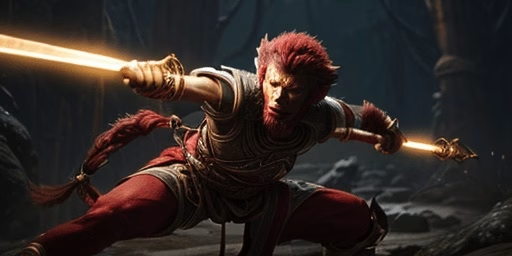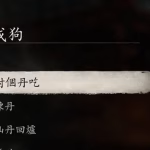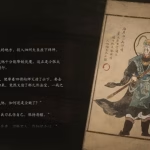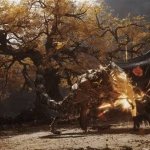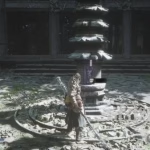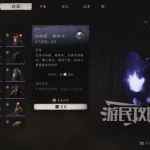Table des matières
Introduction to Wukong and Nezha
Background and Origins
Wukong, also known as Sun Wukong or the Monkey King, and Nezha, the Third Lotus Prince, are two of the most iconic figures in Chinese mythology. Their stories, full of supernatural feats and moral lessons, have shaped Chinese culture and literature for centuries. Wukong originates from the classic novel Voyage à l'Ouest, while Nezha’s tales are derived from various mythological texts and local legends.
Roles in Chinese Mythology
In Chinese mythology, Wukong is celebrated for his rebellious spirit, magical abilities, and journey toward enlightenment. Nezha is known for his role as a youthful deity who defends against evil and upholds righteousness.
Wukong: The Monkey King
Characteristics and Abilities
- Shape-shifting: Wukong possesses the ability to transform into various beings and objects through the 72 Earthly Transformations.
- Superhuman Strength: His strength allows him to wield the Ruyi Jingu Bang, a magical staff, effortlessly.
- Immortality: Achieved through Taoist practices, making him nearly invincible.
- Magic Cloud: He can travel swiftly on a cloud, defying the constraints of distance.
Influence in Chinese Literature and Pop Culture
Wukong’s character is central to Voyage à l'Ouest, where his journey from rebelliousness to redemption is explored. His adventures have influenced countless works of literature, theater, and modern media. The Monkey King’s legacy extends to video games, films, and animated series, where his iconic staff and magical abilities continue to captivate audiences.
Symbolism and Significance
Wukong symbolizes the quest for personal growth and the struggle for enlightenment. His transformation from a mischievous troublemaker to a loyal companion reflects themes of redemption and self-discovery in Chinese culture.
Nezha: The Third Lotus Prince
Characteristics and Powers
- Lotus Form: Nezha is often depicted as a child deity born from a lotus flower, symbolizing purity and rebirth.
- Supernatural Powers: He wields a fiery spear and can summon magical wheels known as the “Fire Wheels” for combat.
- Combat Skills: Nezha is renowned for his exceptional fighting abilities and his role as a protector against evil forces.
Legends and Stories
Nezha’s most famous legend involves his battle against the Dragon King of the East Sea, where he defends his realm from the dragon’s tyranny. His stories highlight themes of bravery, sacrifice, and loyalty.
Representation in Art and Folklore
In traditional Chinese art and folklore, Nezha is often portrayed with his distinctive weapons and lotus flower birth. He is a popular figure in local temples and festivals, where he is venerated as a guardian deity.
Wukong vs Nezha: A Comparative Analysis
Similarities and Differences in Abilities
Both Wukong and Nezha are endowed with extraordinary powers and play heroic roles in their respective narratives. Wukong’s abilities focus on shape-shifting and magical prowess, while Nezha’s powers are centered around martial skills and divine weapons. Despite their different abilities, both figures symbolize the triumph of good over evil and the importance of righteousness.
Roles in Mythological Narratives
Wukong’s narrative is one of redemption and enlightenment, as he evolves from a rebellious figure to a compassionate ally. In contrast, Nezha’s stories emphasize his role as a fierce protector and champion of justice. Their roles complement each other in the broader tapestry of Chinese mythology, each contributing unique elements to the mythological canon.
Cultural Impact and Legacy
Wukong and Nezha have left an indelible mark on Chinese culture. Wukong’s character has influenced various aspects of literature, film, and games, while Nezha is celebrated in local traditions and religious practices. Both figures continue to inspire modern interpretations and adaptations, reinforcing their enduring legacy.
Modern Interpretations and Adaptations
Wukong and Nezha in Film and TV
Both characters have been adapted into numerous films and TV shows. Wukong’s adventures are depicted in movies like The Monkey King series, while Nezha features in films such as Nezha (2019), which reimagines his legend with modern animation techniques.
Pop Culture References and Merchandise
Wukong and Nezha have become popular figures in merchandise, from action figures to themed apparel. Their stories are also featured in video games like Mythe noir : Wukong, where Wukong’s legendary abilities are brought to life in an interactive format.
FAQ
1. What are the main differences between Wukong and Nezha?
Wukong is known for his shape-shifting abilities and magical staff, while Nezha is celebrated for his combat skills and divine weapons.
2. How did Wukong achieve immortality?
Wukong gained immortality through Taoist practices and by consuming the Peaches of Immortality.
3. What is Nezha’s most famous legend?
Nezha is most famous for his battle against the Dragon King of the East Sea, where he defended his realm from the dragon’s tyranny.
4. How is Wukong depicted in modern media?
Wukong is featured in films, TV shows, and video games, such as The Monkey King series and Mythe noir : Wukong.
5. What are Nezha’s primary powers?
Nezha wields a fiery spear and uses the Fire Wheels in combat, showcasing his supernatural abilities.
6. How does Wukong’s journey reflect his character development?
Wukong’s journey from rebelliousness to redemption highlights his transformation and quest for enlightenment.
7. What role does Nezha play in local traditions?
Nezha is venerated as a guardian deity in local temples and festivals, symbolizing bravery and protection.
8. Are there any notable video games featuring Wukong?
Yes, Wukong is featured in games like Smite, League of Legendset Mythe noir : Wukong.
9. What themes are central to Nezha’s legends?
Nezha’s legends focus on bravery, sacrifice, and the defense of justice.
10. How has Wukong influenced global pop culture?
Wukong’s character has influenced global literature, films, and games, showcasing his legendary abilities and enduring appeal.
Conclusion: The Enduring Legacy of Wukong and Nezha in Chinese Culture
Wukong and Nezha, through their distinctive abilities and mythological roles, continue to embody significant aspects of Chinese culture. Wukong’s journey of redemption and Nezha’s valor in combat reflect enduring themes of personal growth and heroic bravery. Their stories have not only shaped traditional narratives but also influenced modern interpretations and adaptations in global media. As iconic figures in Chinese mythology, Wukong and Nezha’s legacies continue to inspire and captivate audiences around the world.
For in-depth information about the game Mythe noir : Wukong, including reviews and updates, visit Black Myth Wukong. This resource provides the latest insights and guides on the game, including boss strategies, chapter details, and system requirements.
